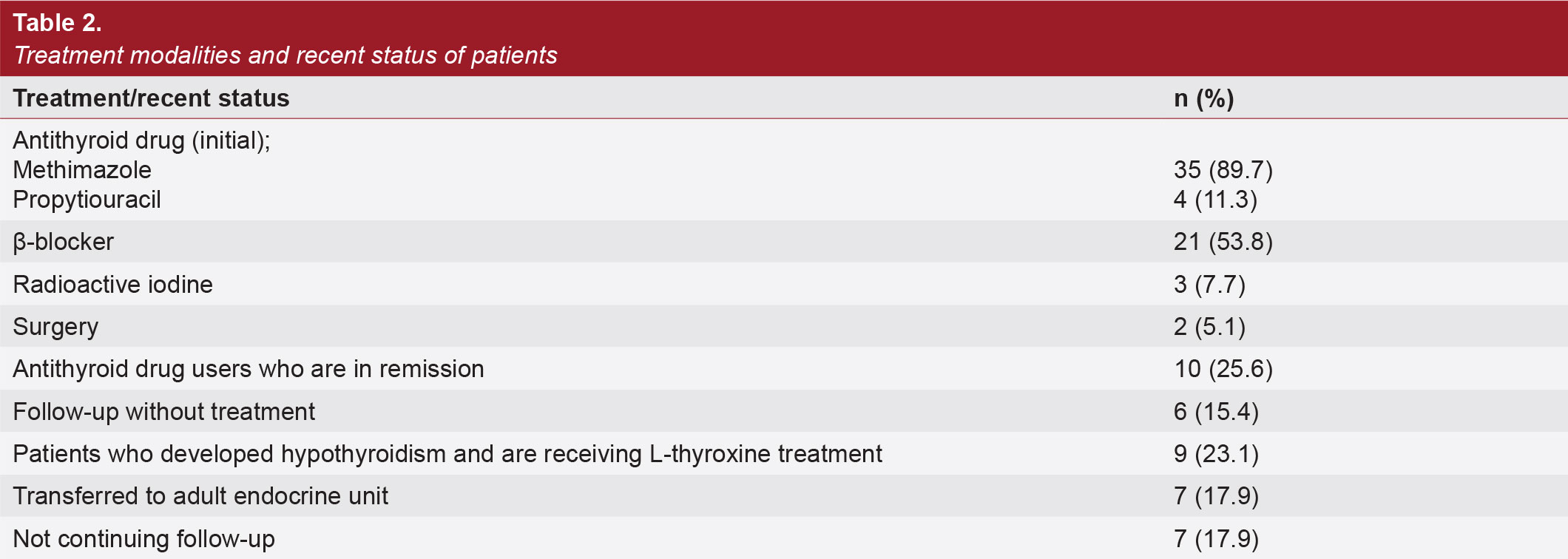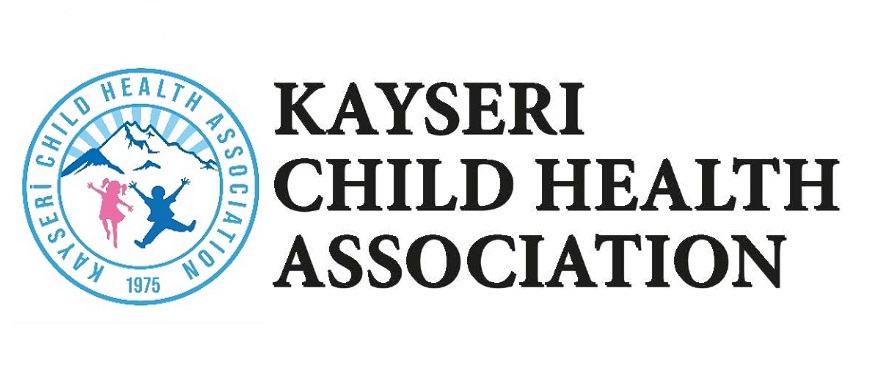Hyperthyroidism in Pediatric Patients in a University Hospital: Ten Years of Experience
Hyperthyroidism in Pediatric Patients
DOI:
https://doi.org/10.4274/jpea.2024.277Keywords:
Hyperthyroidism, Child, TSH, Graves’ diseaseAbstract
Although rare in childhood, hyperthyroidism is diagnosed by suppressed serum thyrotropin (TSH) levels and increased levels of free triiodothyronin (fT3) and free thyroxine (fT4) in addition to history and physical examination findings. In this study, we aimed to investigate the causes of hyperthyroidism and the clinical features of the disease in children and to evaluate the treatment. A total of 39 patients with hyperthyroidism diagnosed between 2010 and 2019 in the pediatric endocrinology department were included in the study. The diagnosis of hyperthyroidism was established on the basis of the suppressed serum TSH level and increased fT3 and/or fT4 levels with clinical findings. Thirty-one (79.5%) patients were female, and the mean age of admission was 14.4 (4.3-17.5) years. Of the cases, 33 (84.6%) were diagnosed with Graves’ diseases and 6 (16.7%) with Hashimoto thyroiditis. The most frequent complaints of patients diagnosed with hyperthyroidism were irritability (24, 61.5%), palpitation (22, 56.9%), and sweating (21, 53.8%). The most frequent findings were goiter in 31 (79.5%) patients and tachycardia in 27 (69.2%) patients. Serum TSH levels were suppressed in all patients, fT3 levels were increased in 94.4% of them, and fT4 levels were increased in 80.5% of them. In patients with Graves’ disease, TSH receptor antagonist was positive in 31 (93.9%) cases, and at least one of the thyroid autoantibodies was positive in all patients. Antithyroid drug treatment was initiated in all patients; 35 of them received methimazole and 4 of them received propylthiouracil. Radioactive iodine treatment was applied to three patients, and two patients were treated surgically who did not respond to antithyroid drug treatment. Antithyroid drug adverse effects were observed in 7 (21.2%) patients, requiring drug discontinuation in 1 patient. Although hyperthyroidism is rare in childhood, its treatment is difficult and requires close follow-up. Treatment options are different for adult patients. There is a need for multicenter studies to evaluate treatment efficacy and long-term outcomes in children.

Downloads
Published
How to Cite
Issue
Section
License
Copyright (c) 2023 The Journal of Pediatric Academy

This work is licensed under a Creative Commons Attribution-NonCommercial-NoDerivatives 4.0 International License.








